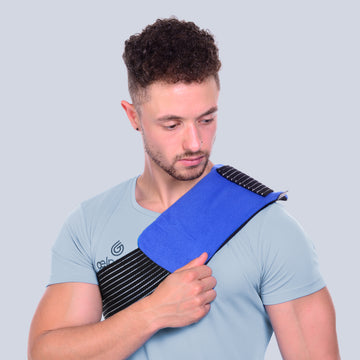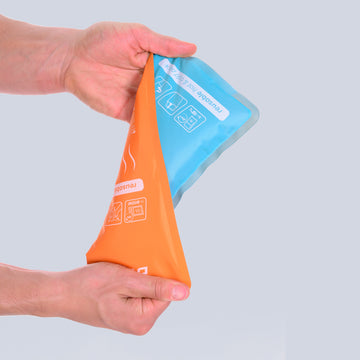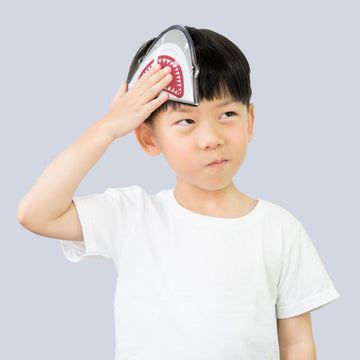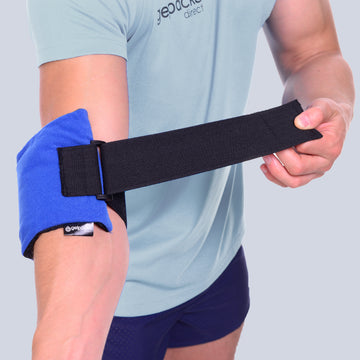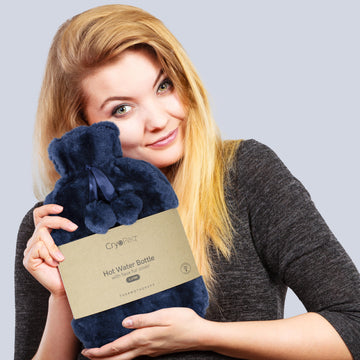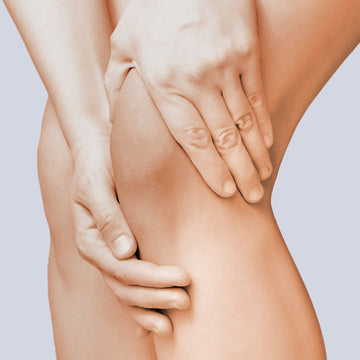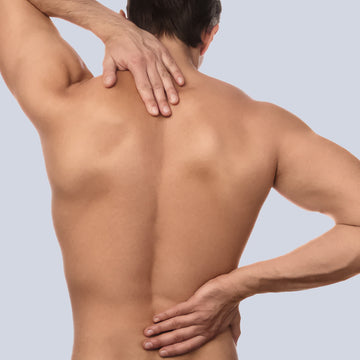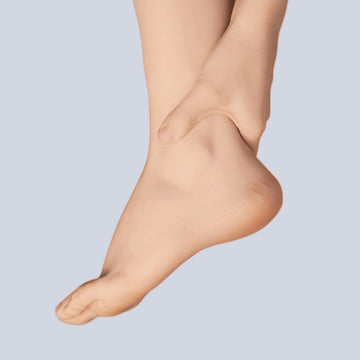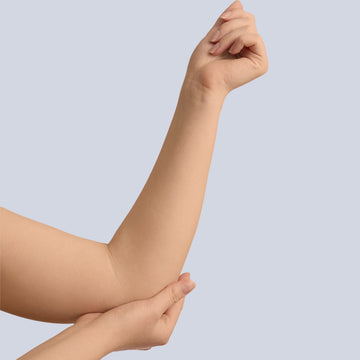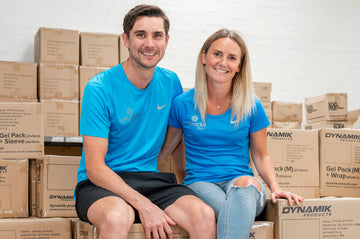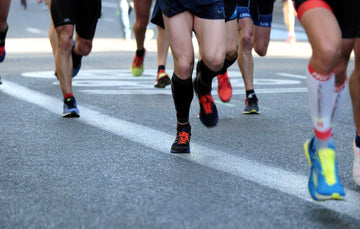Posted by Chloe Simkiss Jan-10-2021
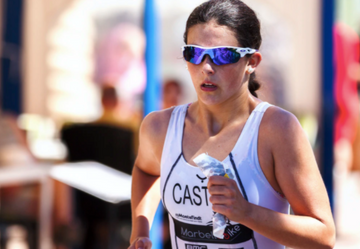
Common triathlete injuries and how to treat them
Triathlon is a fast growing endurance sport that combines swimming, cycling and running. It's a great way of keeping fit, but it's also a very demanding hobby and its competitive nature can lead to injury. Triathletes push their body to the limit, and sometimes those limits can bring the body to its breaking point. They share many of runners' overuse injury woes, but also have to deal with a small but significant number of acute injuries. Also due to the time spent training and competing, participants tend to get less time to recover or sleep as they fit in intensive training regimes around work and/or home commitments. Read on for common triathlete injuries and TeamGPD tips for preventing and treating triathlon injuries. Check our simple guide to getting you to race ready here!
Swim
1. Shoulder Pain (Rotator Cuff Tendonitis)
Symptoms: These could be anything from from a dull ache to a sharp pain in your shoulder. You’ll especially notice it when your arm is extended above your head or during a freestyle swim stroke.
How it is caused: The freestyle stroke develops the front of the shoulder and the chest muscles, creating an imbalance with the rest of the shoulder muscles. It is important to ensure you have the right form as if not it can cause difficulties.
How to solve it: You should stop when the pain is at a whisper, and don't wait until it's a scream. Ensure you rest, massage, and ice the affected area to reduce swelling. To prevent it happening again, build up your shoulder strength by incorporating sets of lateral raises with light dumbbells or resistance bands to engage the rear deltoids and bring balance back into the shoulder.
Try our shoulder hot cold gel pack
2. Swimmer’s Knee Usually one for the breastrokers!
Symptoms: This can include general knee pain, inflamed and/or fatigued knee tissue and swelling of the knee. You may also feel a sharp pain when placing the knee under stress.
How is it Caused: Swimmers knee is most common in the breaststroke, but is often found with those who have improper swimming form. This injury will not happen immediately, but the repetitive nature of swimming will cause excessive wear and tear on the knee so it is important again to ensure you have the correct form.
How to solve it: One of the best ways to rehab the pain is to reduce your intensity and exercise that affects the area. You should introduce a strengthening program to strengthen the muscles around the knee including quadriceps and hamstrings. In order to prevent this, try to focus on improving your form by doing various drills while in the water. Ice packs should be used to reduce any swelling as soon as you feel pain, and physiotherapy will also help strengthen the muscles.
Check out our Hot Cold Therapy Solution for Knee Pain Relief
3. Neck Injuries
Symptoms: Swimming can cause significant strain on the neck as well. Neck may feel achy or could involve throbbing and sharp pains. It may involve muscle spasm and you may feel stiffness when moving your head to look over each shoulder.
How it is caused:This is primarily due to the twisting and bending involved in keeping the head above the water when sighting, or, rotating the neck to breathe during the freestyle stroke.
How to solve it: Ultimately, honing your technique will eliminate potentially damaging neck movement is the best prevention measure for this injury, such as rotating the entire body to breathe instead of twisting your neck. Try to create variety in your swimming routine and try other strokes. Use ice for the first 24 to 48 hours after an injury to reduce swelling, followed by heat to loosen muscles and improve stiffness.
For more information on open water swimming click here!
Run
1. Achilles Tendonitis
Symptoms: A pain below your calf and above your heel. You may also see a bump of swelling or redness in the Achilles tendon, or feel creaking. The pain may not be very bad at first, but don’t ignore it—it can quickly morph into a chronic issue if you don’t deal with it.
How it is caused: The Achilles connects the large calf muscles to the heel. When the calf muscles get tight, they pull on tendons below and cause micro-tears in the Achilles. The tendon can also become inflamed with overuse.
How to solve it: Try exercises like rolling the bottom of your foot with a golf ball. If the pain goes away as you run, feel free to run on it. But if pain starts at the beginning of your run and gets worse, consider taking a break from running. To help it heal, apply cold therapy to the area that hurts for 10 to 15 minutes every two to three hours. Be sure to stretch both calf muscles before and after runs with static stretches that target the Achilles and calf.
2.Fallen Arch
Symptoms: Your feet tire easily or are painful or achy, especially in the areas of the arches and heels. The inside bottoms of your feet become swollen and you could have back and leg pain.
How is it caused: The arch of the foot plays an important role in the stride and absorption of impact on the body while running. It helps to distribute the weight properly across the feet and up the leg. Your arches become weakened through overuse, improper training, or foot strike and in turn, can tear. When this tendon tears, the arch of the foot falls, causing an internal rotation of the foot .
How to solve it: Rest and recovery between activities can treat fallen arches, use ice to relieve pain and reduce swelling.The best prevention is ensure you are wearing the correct footwear. A good physiotherapist will be able to advise you on suitable insoles for your running shoes. They can also make minor adjustments to your footwear to help improve your body mechanics.
Keep your arches and feet strong through triathlon training by performing heel raises on the edge of a bottom step. This action will help strengthen the muscles and tendons in your feet.
Try our hot cold gel pack for foot pain
3. Stress Fractures
Symptoms: Stress fractures are really common in triathletes and mainly occur in the hip, foot, or tibia (the main bone in your calf). You’ll feel pain in the bone during exercise, and probably see some swelling.
How it is caused: When you dramatically increase in training volume without proper adaptation and recovery, the constant pounding on the pavement can fracture the bone. (Regular rest gives it time to repair, avoiding sports injury.)
How to solve it: To avoid it happening start by being smart with your mileage when running and take rest days throughout triathlete training and recovery. If you suspect a stress fracture, stop running completely and seek advice from a doctor or a physio. Often you’ll have to rest for 6 to 8 weeks to let the stress fracture heal. The upside: More time to perfect your swim form! Check out our blog here for more on what to do on rest day!
Check out our guide to running like a pro here.
Bike
1. Iliotibial (IT) Band Syndrome
Symptoms: A sharp pain or tightness on the outside of the knee just below the joint. The IT band is a key stabilizer for the leg, so when it flares up it’s enough to debilitate bikers completely.
How it is caused: The IT band starts in the muscles of the gluteus and hip and moves down the outside of your thigh. You can aggravate the IT band by upping your mileage too quickly. This happens as the knee is repetitively bent and straightened, leading to a flare up.
How to solve it: Spend time on a foam roller. The rolling breaks down knots and prepares muscles for stretching. Try lying on your side with the roller starting at your inside hip. Rest your other leg's foot on the floor. Roll along your outer thigh from your hip to your knee. Perform exercises to strengthen hip abduction or you can do more running-specific moves like walking lunges.
2. Patellar Tendonitis
Symptoms: Pain in the center of your knee, almost right under the kneecap. You’ll especially feel it when seated for long periods of time.
How it is caused: The quadriceps muscle in the front of your thigh becomes tight or inflamed and pulls the kneecap against the joint. It is usually due to an improper bike fit.
How to solve it: Ensure you have had a professional bike fitting. That usually will fix the problem. To speed healing, roll out your quadriceps on a foam roller. Avoid doubling up hilly weeks of riding with hilly weeks of running, since both punish on your quads—alternating is safer. Try icing the area for just 15 to 20 minutes every four to six hours.After the first three days, heat may provide better benefit for chronic tendinitis pain. Heat can increase blood flow to a sports injury, which may help promote healing. Heat also relaxes muscles, which promotes pain relief.
3. Back Injuries
Symptoms: The lumbar spine is often affected, due to the sustained, unnatural flexed position of the cyclist. Disc conditions often occur, as well as chronic muscle imbalances and painful muscle spasm. You may have stiffness or difficulty moving as well as bruising and swelling.
How it is caused: Make sure you are not riding bikes that are too big - we always advise a professional bike fit. Seek the advice of an expert to ensure your perfect positioning, this will also lead to significant gains on race day! Poor spinal health is common in cyclists and often due to bad posture (on and off the bike) .Lower back pain may arise in cyclists that push big gears, especially while climbing. The angle of your back in relation to the bike can increase or decrease the strain on your back so ensure you work on your form!
How to solve it:
Many of the common triathlon injuries can be prevented through education and body conditioning. Making sure you are aware of sports injury risks and taking steps to avoid them is the best course of action. This includes warming up effectively and using the right equipment, set up in the best way for you. Keep working on your technique and try to mix up your training with other activities such as yoga. Click here for more on yoga for runners.
When your back pain is acute (less than a 4-week duration) and/or occurs due to a direct injury, use cold therapy first. Once the inflammation has eased up, use heat therapy. When you apply heat, it improves the flexibility of soft tissues, movement of muscles, and overall functioning of the back.
Try our hot cold gel pack for back pain
Enduring the discomfort that one of these sports injuries can bring is painful, but continuing to exercise even despite this pain is even worse. Having an awareness of these common injuries and the steps you can take to prevent them will help you to stay healthy while triathlon training. Above all, listen to your body, don’t over train and make the most of those rest days!
Stay fit and healthy!
#TeamGPD
